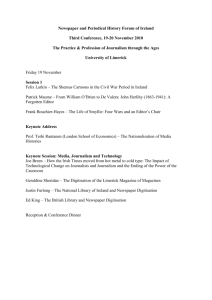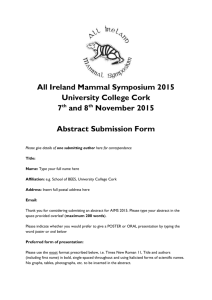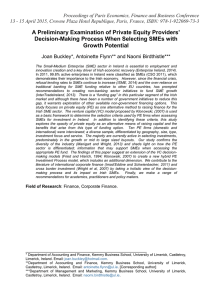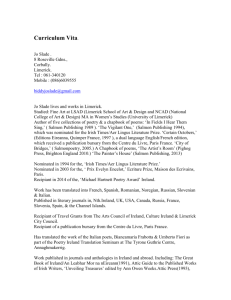Supp Materials for publication
advertisement
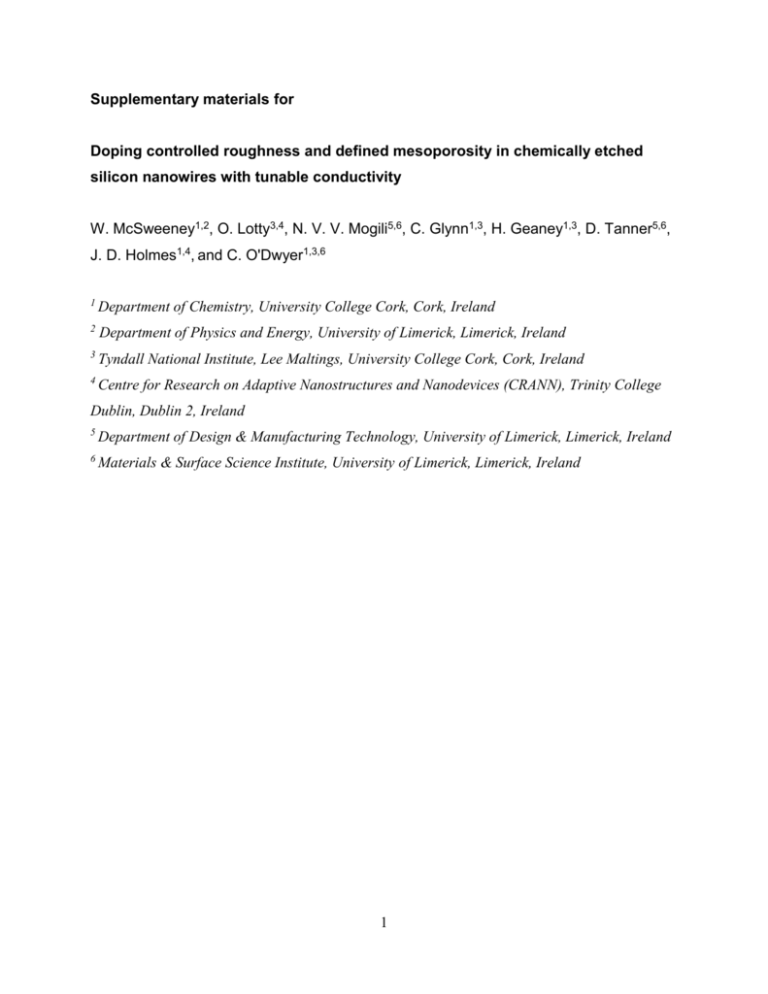
Supplementary materials for Doping controlled roughness and defined mesoporosity in chemically etched silicon nanowires with tunable conductivity W. McSweeney1,2, O. Lotty3,4, N. V. V. Mogili5,6, C. Glynn1,3, H. Geaney1,3, D. Tanner5,6, J. D. Holmes1,4, and C. O'Dwyer1,3,6 1 Department of Chemistry, University College Cork, Cork, Ireland 2 Department of Physics and Energy, University of Limerick, Limerick, Ireland 3 Tyndall National Institute, Lee Maltings, University College Cork, Cork, Ireland 4 Centre for Research on Adaptive Nanostructures and Nanodevices (CRANN), Trinity College Dublin, Dublin 2, Ireland 5 Department of Design & Manufacturing Technology, University of Limerick, Limerick, Ireland 6 Materials & Surface Science Institute, University of Limerick, Limerick, Ireland 1 To examine the phase purity of the etched NW layers, X-ray diffraction was carried out on both the pristine Si wafer coupons and the resulting Si NW layers. Figure S1 below confirms that the overall crystal a structure remains unchanged. The reduced intensity of the NW sample compared to the pristine sample stems from the partially reduced thickness of a complete Si single crystal, i.e. the volume fraction of dense Si is reduced. Figure S1(a) shows the typical XRD pattern of the Si NW film. It can be seen that the peaks at ~33o and ~70o can be indexed as (200) and (400) of the standard cubic phase Si which indicates the axial direction of the Si NWs has a preferred orientation of (100) which is consistent with the orientation of the bulk Si wafer and have been reported elsewhere who reported a very high intensity Si (400) peak and a low intensity Si (200) peak. The (200) peak for the p-type Si NWs appears broadened when compared to the same for the p-type bulk, but quantitative analysis of the effective sizes are not meaningful when compared to a single crystal Si(100) wafer. FIG. S1 (a) XRD spectra from p-type bulk, p-type NW, n-type bulk and n-type NW samples from 50 to 800. 2 (a) (b) FIG. S2 (a) Secondary electron image of a single rough Si NW with elemental line scans superimposed on the area of measurement for Ag, O, C, and Si. (b) EDX line profiles for Ag, O, C, and Si. 3 a b Counts (a.u.) O K Al K Si K Pt L 50 nm 0 20 40 Distance (nm) 60 20 c d 15 Current (A) Al-Si Si Al 10 5 0 Pt -500 -250 0 250 500 Applied Voltage (mV) FIG. S3 (a) Elemental line scans of X-ray emission from the Si-Al interface acquired using TEM-EDX. (b) Cross sectional HAADF STEM image of the Si-Al interface between the Al and Si corresponding to the bright field TEM image in (c). (d) Rectifying Schottky junction I-V curve from the Al-contacted Si due to the presence of the intermetallic. 4
